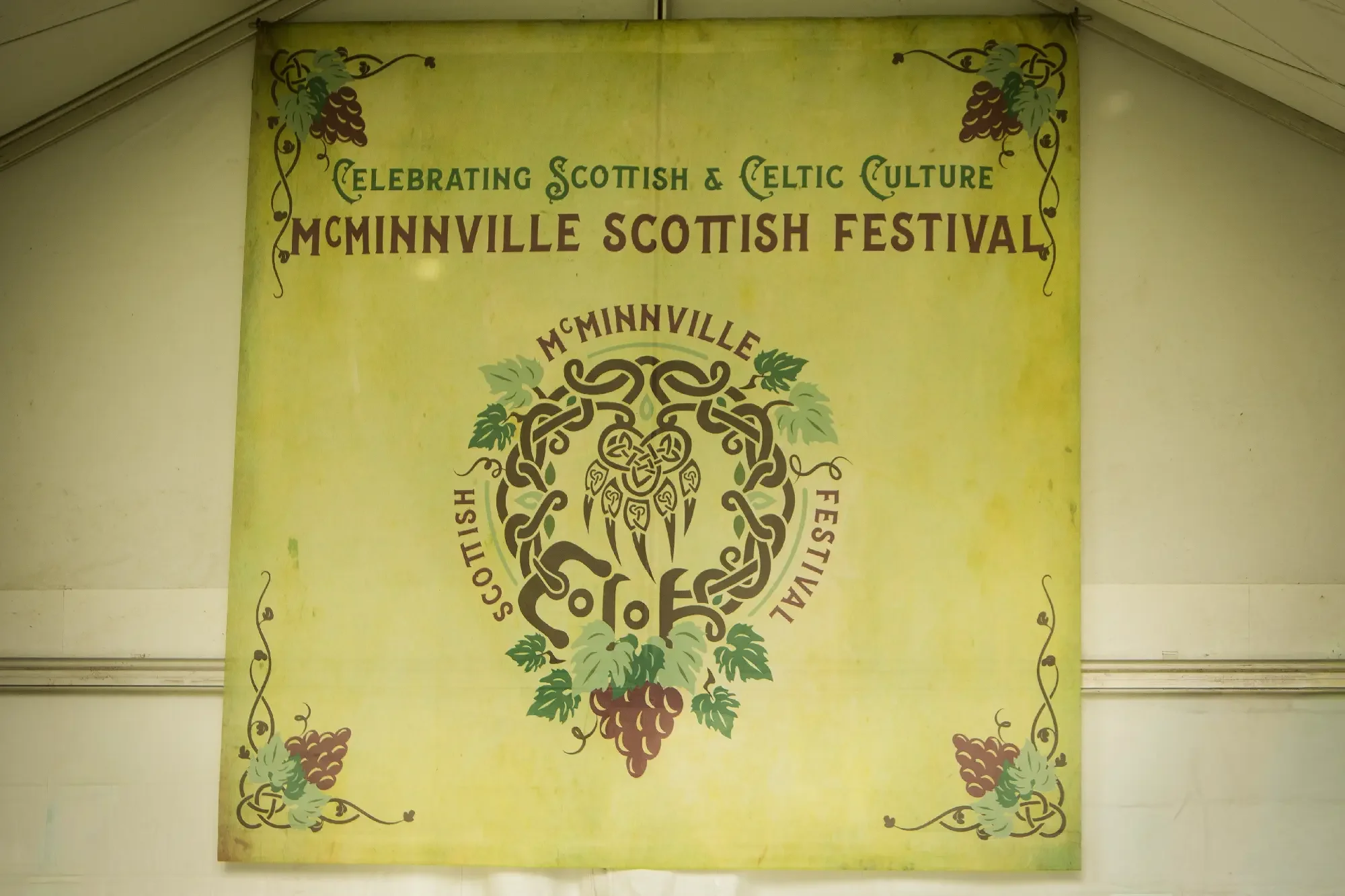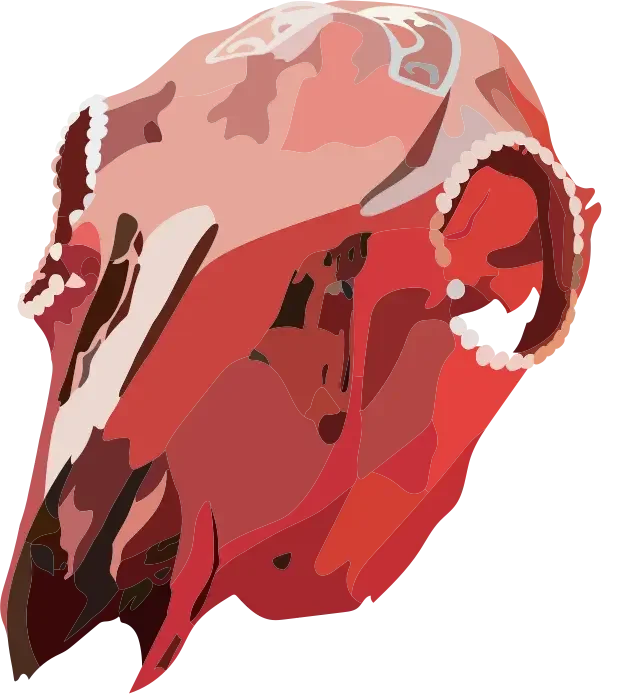The Power of Storytelling Through Visual Design
The McMinnville Scottish Festival banner at the main stage. It features several design elements that connect the festival to Scottish heritage, including Celtic knots, grapes, and an implied belt.
There are a lot of things that can catch the human eye’s attention. Colors and motion can especially draw the viewer's attention. Visual design allows creators to communicate emotion, identity, and meaning more immediately than words alone.
A single image can suggest a mood or signal a brand’s personality. When design choices are intentional, visuals can become powerful vessels for storytelling.
Why Visuals Tell Stories More Powerfully Than Words Alone
Words require processing. Visuals create sensations. It’s a common saying that pictures speak a thousand words.
A well-designed poster, logo, or character can communicate narrative elements: setting, attitude, and meaning at a glance. Visual storytelling is fast, intuitive, and when done right, it can be memorable.
Everyday Examples of Visual Storytelling
Storytelling through design isn’t limited to movies or graphic novels. It appears everywhere:
Branding
The Chocolate Lantern and Apothecary logo conveys its brand by using a dark color pallet and silhouettes of gears that convey a cozy and historical aesthetic.
A brand’s visual identity is the face of the brand itself. Color palettes, typography, and icons communicate your values: calm professionalism, bold innovation, or whimsical playfulness. A strong brand identity instantly signals what the brand is and what story it wants to tell with confidence.
Band Posters
Band posters often illustrate an entire genre or vibe without a single lyric. Textures, lighting, layout, and imagery can hint at energy (punk), atmosphere (ambient electronic), or emotion (folk storytelling).
Crochet Characters
A collection of crochet characters for sale at the Prosser Highland games.
Even fiber art conveys a story. A crochet creature like a tiny crow, cow, or fox reflects personality through its colors, posture, facial expression, and the props or scenery around it. These design choices invite viewers to imagine who the character is and what world it inhabits.
Key Design Principles That Strengthen Storytelling
Color
Color can set an emotional tone. Warm tones can signal energy or optimism; cool tones can convey calm or melancholy. Purposeful color use reinforces the story you want your viewer to feel.
Composition
Composition guides the viewer’s eye.
Balance, symmetry, the rule of thirds, and visual hierarchy shape how a viewer experiences the narrative. Good composition acts like pacing in a written story, and takes purpose and commitment to become proficient.
Emotion & Expression
Visuals should make people feel something.
Expressive forms, texture, contrast, and movement all help convey the emotional subtext of the story. The difference between a classic cartoon and a modern live-action series, for example.
Consistency
A cohesive visual language builds recognition and deepens narrative impact. It makes your product feel distinct, carefully crafted, and professional.
Tips for Creators: Infuse Story Into Your Own Design
Start with a narrative, not aesthetics. - Ask: Who or what am I designing for? What story should the viewer understand instantly?
Use color intentionally. - Build a palette that aligns with the mood, values, or personality you want to convey.
Think in scenes. - Even static designs can imply movement, environment, or character.
Let composition direct emotion. - Off-center subjects feel dynamic; symmetrical layouts feel stable and calm.
Add small details that imply history or personality. - A stitch pattern, a background symbol, and a shadow can all function as narrative hints.
Aim for consistency. - Repeated shapes, motifs, or colors build a cohesive visual story across platforms.
Every design is an opportunity to tell a story. When we treat visual elements as narrative tools and not just decoration, we create work that resonates, connects, and lingers in memory. Whether you’re developing a brand, crafting a band poster, or bringing a crochet character to life, your design choices shape the story your audience will see, feel, and remember. It is one of the most important parts of your project’s identity.






